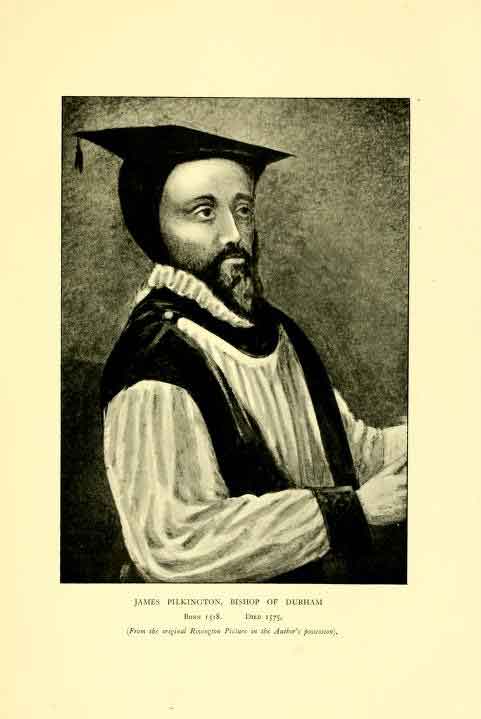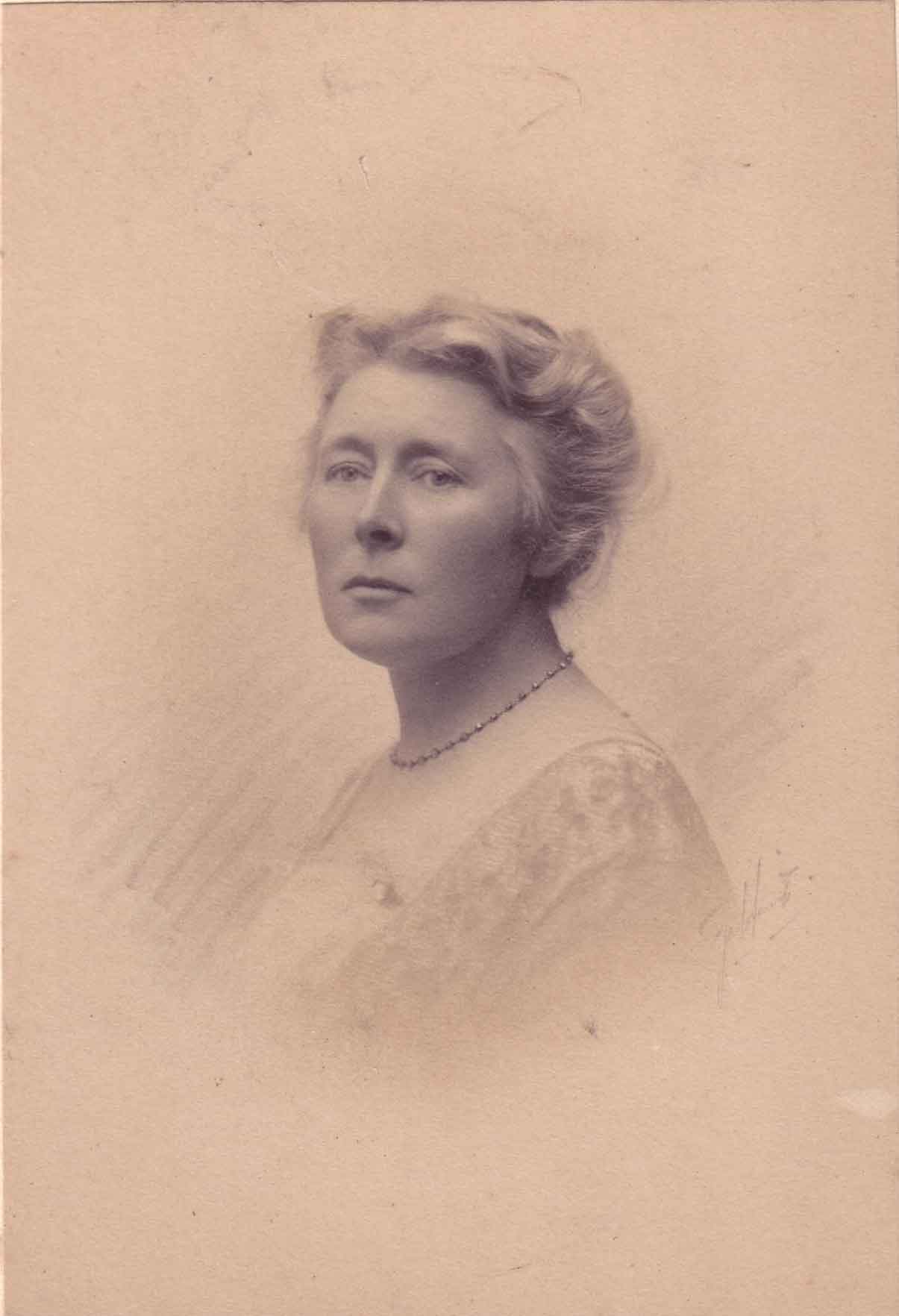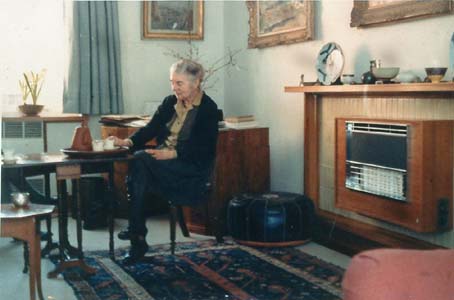Lawrence Pilkington
Generation 2
Contact the author and navigate this site
Lawrence Pilkington b.1855 d.7 October 1941
Son (youngest) of Richard Pilkington of Windle Hall, Saint Helen's
(himself eldest son of William Pilkington of Windle Hall and Anne Hatton,
daughter of Richard Hatton of Parbold), co-founder of
the Pilkington Glass Works in St Helens, and Ann Evans, daughter of Richard
Evans of Haydock. More information
Coal owner and Chairman of Salford Royal Hospital for 30 years.
Married in 1890 Mary 'Mollie' Gavin Stevenson b.1867 d.18 January 1942
[picture],
daughter of Archibald Stevenson
d.1877 aged 38.
They had the following children:
| F |
i |
Margaret b.1891 d.2 August 1974 unmarried. Director Pilkington
Pottery Co. Trained at Slade School. Member of the Committee for the Whitworth
Collection, Manchester; endowed the 'Margaret Pilkington Room' at the
Whitworth Museum. Secretary of the Wood Engravers Society. Member of several
artistic and philanthropic institutions. More |
| F |
i |
Dorothy Lawrence b.1893. Unmarried. Director
Pilkington Pottery Co and of Clifton and Kersley Coal Co. |
Other information
Back to top of page
The Pilkington Family of Rivington
The Pilkington Family have their roots in the Manor of Pilkington, near Whitefield
in Bury, and their ancestry goes back to Alexander (sometimes known as Leonard)
de Pilkington who fought at the Battle of Hastings in 1066. It was upon his
marriage that Whitefield and Underworth (later called Unsworth) became part
of the Pilkington Estate. The districts of Stand and Outwood, old parts of Whitefield,
remained solely in the hands of the Pilkington family until the fifteenth century
when the entire Manor passed to the Derby family - probably forfeited because
of the Pilkington family allegiance to the defeated and deposed King Richard
III.
Robert Pilkington fought and died at the Battle of Agincourt and Sir Thomas
Pilkington fought at the Battle of Bosworth and was killed at the Battle of
Stoke in 1487. In the early 16th century, James Pilkington, the third son of
Richard Pilkington of Rivington Hall, became the first Protestant Bishop of
Durham and thereafter the family gained lands all over England. His brother
Leonard Pilkington founded a Grammar School in the
1500s at Rivington, near Horwich, with the permission of Queen Elizabeth I.
(See History
of the Pilkington Family of Lancashire 3rd edition 1912 by Lieutenant-Colonel
John Pilkington, private printing by C Tinling & Co)

James Pilkington, first Protestant Bishop of
Durham
Nearer to the present day William Windle Pilkington, who was born at Windle Hall, St Helens in
Lancashire on 26th September 1839, the eldest son of Richard Pilkington, was to become one of the
founders of the famous Pilkington Glass works in St Helens. He was married to Ann Evans, who was
the daughter of Richard Evans, proprietor of the Haydock Collieries.
Richard Pilkington was a magistrate and the co-founder of Pilkington Glass.
Margaret Pilkington (1891-1974) was a skilled wood-engraver
but is better remembered as a champion of the arts and crafts. She was honorary
director of Manchester's Whitworth Art Gallery from 1936 until 1959 and was the
leading figure in the Red Rose Guild of Designer Craftsmen. Margaret Pilkington
also held strong social commitments, reflected primarily in her work with girls'
clubs in Manchester, but also in her pioneering views in relation to public access
to galleries. She was actively involved in many aspects of Manchester's social
and intellectual scene; she was a Justice of the Peace for Manchester from 1945
and a member of the Manchester Diocesan Advisory Committee for the Care of Churches
from the late 1940s. She was the first woman to be president of either the Manchester
Luncheon Club (1963-1964) or the Manchester Literary and Philosophical Society
(1964-1965).
Margaret Pilkington was born at Pendleton near Manchester on 25 November 1891
into an affluent family. She was the elder daughter of Lawrence Pilkington (1855-1941)
and Mary "Mollie" Gavin Pilkington, née Stevenson (d. 1942). Her father was the
co-founder, with his brother Charles, of the Pilkington Lancastrian Pottery and
Tile Company at Clifton Junction near Manchester, famous for its lustre wares.
Margaret Pilkington herself was a director of the firm for many years. Margaret
had one sister, Dorothy Lawrence Pilkington (1893-1971) to whom she remained close throughout
her life. In 1907 the family moved from Southgarth, their house in Pendleton,
to Firwood, a house in the village of Alderley Edge, a desirable area fifteen
miles south of Manchester. Margaret and Dorothy were both sent to the private
Croham Hurst School in South Croydon. Encouraged by Theodora Clark, the Quaker
headmistress, Margaret showed a talent for and enjoyment of art. She pursued this
interest and from 1911 to 1913 studied at Manchester College of Art. In 1913 she
defied the accepted social conventions of her background by going to London to
study painting at the Slade School of Fine Art. Her parents were at first apprehensive
about her going to study in London, but they eventually agreed to let her attend.
In 1914 Margaret Pilkington enrolled at the Central School of Arts and Crafts;
this was to prove a formative development in her career. The school employed leading
craftsmen as tutors, including May Morris, Douglas Cockerell and Edward Johnston.
Margaret Pilkington studied wood-engraving under the tutorship of the influential
wood-engraver Noel Rooke. Margaret stayed in touch with Rooke for many years,
but it was Lucien Pissarro whom Margaret Pilkington felt to have had the greater
impact on her style. Margaret Pilkington became good friends with the Pissarro
family and would offer help at their Eragny Press. Her wood engravings demonstrate
a skilled use of contrast between black and white, light and shade.
The outbreak of the First World War cut short Margaret Pilkington's studies at
the Central School and she moved back home to Alderley Edge. However, she regularly
visited London and met Noel Rooke at the Central School. During these war years,
Margaret Pilkington became involved with various Manchester girls' clubs, valuing
social duty over her own artistic pursuits. Margaret devoted much time to the
girls' club in Ancoats, a poor district in Manchester, was honorary secretary
of the Pioneer Club for business and professional girls and women from its foundation
in 1916, and was President of Manchester and Salford Girls' Clubs from 1929 to
1931.
Although Margaret Pilkington continued with her painting, drawing and wood engraving,
she put a lot of her efforts into organization within the arts. In 1920 she organized
an exhibition at Houldsworth Hall that marked the beginnings of the Red Rose Guild,
exhibiting with the Society of Wood Engravers. She became a member of the Society
the following year, was honorary secretary from 1924 and chairman from 1952 until
1967. A founder member and honorary secretary of the Red Rose Guild, she was appointed
chairman in 1926. Her appointment diaries suggest how much time she devoted to
these two bodies over the years. Margaret was also a member of the Manchester
City Art Galleries from 1925 and was president of the North West Federation of
Museums and Art Galleries from 1945.
In 1925 Margaret Pilkington was invited to join the council of Manchester's Whitworth
Art Gallery (officially known as the Whitworth Institute), beginning what was
to be a life-long involvement with the gallery. She was honorary director from
1936 to 1959. At the outbreak of the Second World War she oversaw the decision
to move many of the gallery's art treasures to storage in the National Library
of Wales. She then helped to set up a rest centre at the Whitworth for those who
had been made homeless by the air raids, personally looking after people there.
After the war the Whitworth's grand Edwardian galleries looked unfashionable.
The Whitworth Institute's financial situation left it struggling to pay even for
redecoration. In 1958, its neighbour, the University of Manchester, took over
the Whitworth Institute and renamed it the Whitworth Art Gallery. Margaret Pilkington's
achievements were recognised with the award of an honorary MA from The University
of Manchester in 1942 and an O.B.E. in 1956.
On 7 October 1941 Margaret's father Lawrence died, followed three months later
on 18 January 1942 by her mother Mollie. Lawrence Pilkington was the youngest
son of Richard Pilkington, the co-founder of the Pilkington Glass Works in St
Helens, and of Ann Evans, whose family owned collieries. Lawrence and his brother
were proprietors of the Clifton and Kearsley Colleries and Lawrence later went
on to be joint proprietor, and eventually Chairman, of the Royal Lancastrian Pottery
and Tile Company at Clifton. He was also a keen mountaineer, amateur musician
and author (see his Guardian obituary, 9 October 1941). While they may not have
seen eye to eye on all matters, Margaret Pilkington appears to have had a great
deal of respect and affection for her father. She engraved illustrations for a
number of books he wrote such as Tattlefold, Thoughts in Hospital and An Alpine
Valley and other poems. Her diaries and correspondence suggest that his death
left her with a very deep sense of loss.
This, regarding Lawrence Pilkington and his brother Charles, from WalkHighlands:-
"In 1880 Willie Naismith, later to be the founder of the Scottish Mountaineering Club, made his first
visit to Skye. He climbed the north peak of Bidein Druim nam Ramh. Later in the year, Charles and
Lawrence Pilkington (of Pilkington Glass), two of the greatest climbers of their day, came to the
island. They made the first ascent of the Inaccessible Pinnacle, watched by John MacKenzie, who
returned to make the second ascent the following year after taking off his shoes. By 1886 Stocker
and Parker had ascended the west side of the pinnacle."
"In 1887 Charles Pilkington – with MacKenzie - climbed Sgurr Thearlaich, and later Sgurr Mhic Choinnich.
The peaks were named in their honour; Sgurr Thearlaich is Gaelic for Charles’ peak; whilst Sgurr Mhic
Choinnich is Mackenzie’s."
Margaret and her sister Dorothy continued to live together at the family home.
In 1943 the two sisters provided three-quarters of the money needed to buy Alderley
Woods, giving the woods to the National Trust in memory of their parents. Their
generosity and love of art is reflected in their numerous donations of works of
art to the Whitworth Gallery and their endowment in 1958 of the Pilkington chair
in the history of art at the University of Manchester. Margaret also donated works
of art to Abbott Hall, Kendal and to what is now the Crafts Study Centre, Surry
Institute of Art and Design. Dorothy's major commitment was to the Manchester
High School for Girls, for which she was on the governing body from 1935 to 1970,
and chairman from 1944 to 1963. She was granted an honorary MA by the University
of Manchester in 1964.
Margaret Pilkington's papers devote much attention to her travels. From her first
trip abroad to the Swiss Alps in 1908 with her parents, she continued to travel
extensively. She recorded in words and images her impressions of what she saw,
paying particular attention to local people, mountain scenery, architecture, museums
and galleries. Her diaries and letters show Margaret as a modest yet determined
woman endowed with great generosity. She died of breast cancer on 2 August 1974
aged 82¹
¹Thanks to the John Rylands University
Library for the biographical detail.
Back to top of page

Mary 'Mollie' Gavin Stevenson b.1867 d.18 January 1942
Back to top of page

Margaret Pilkington b.1891 d.2 August 1974
Back to top of page
Contact the author and navigate this site
- Index list of names found in the Anderson, Beckett,
Geddes, Hibbert, Jeans, Jeffrey, Murray and Pike family trees
- Anderson of Inverugie, Scotland - first of 9 generations of Anderson family tree
- James Robertson Beckett - first of 5 generations of Beckett family tree
- "Tacksman" David Geddes
- first of 10 generations of Geddes family tree
- Joseph Hibbert of Lancashire - first of 9 generations of Hibbert family tree
- George Henry Jeans - first of 6 generations of Jeans family tree
- John Jeffrey - first of 5 generations of Jeffrey family tree
- John Murray - first of 9 generations of Murray family tree
- Richard Pike - first of 9 generations of Pike family tree
- Details of two Holiday cottages near Cartmel, Cumbria (South Lakes), with the Silver Award for Green Tourism.
- Broughton Bank Perry and Cider near Cartmel, Cumbria (South Lakes), Perry and Cider and their vinegars naturally brewed from local fruit.
Want to ask questions, offer information or pictures,
report errors, suggest corrections or request removal of personal information?
Contact author
Back to top of page
Notes on sources
Anderson family tree
Information is largely taken from the book 'The
Andersons of Peterhead'. This was based on the records made by John Anderson
1825/1903 [VIII 32], known as 'China John'. This was brought up to date in 1936
by Cecil Ford Anderson [X 17] and Agnes Donald Ferguson [CS 45 X b]. Many photographs
were taken and compiled in an album by Olive Edis (daughter of Mary
Murray, daughter of Andrew Murray
(2) of Aberdeen). Corrections to both Janet Innes Anderson's and
Alexander Murray's death dates from
Robert Murray Watt and
Iain Forrest.
Forrest family tree
Iain Forrest
kindly supplied material to update
the Forrest family (progeny of William Forrest) details.
Hibbert family tree
The information is largely taken from a tree compiled by F.B. (she knows who she is!) with extra material found by the author.
Murray family tree
The 'Genealogical Table showing various branches
of the Murray family', from which this information was taken, was prepared by
Alexander Murray of Blackhouse, extended by Andrew Murray - advocate - Aberdeen
circa 1880 and further extended by Arthur Murray Watt 1972. The generational
notation is the author's.
Pike family tree
Information from family sources as well as 'Burke's Landed Gentry' 1875
Stevenson family tree and many Stevenson and Anderson photos
Deepest thanks for some fantastic pictures and for writing the wonderful book 'Jobs for the Boys' to Hew Stevenson,
which you can see on www.dovebooks.co.uk.
And the rest
Thanks also to all who have written in with information, advice, help and,
most importantly, corrections.
© John Hibbert 2001-2013
28 February, 2021



